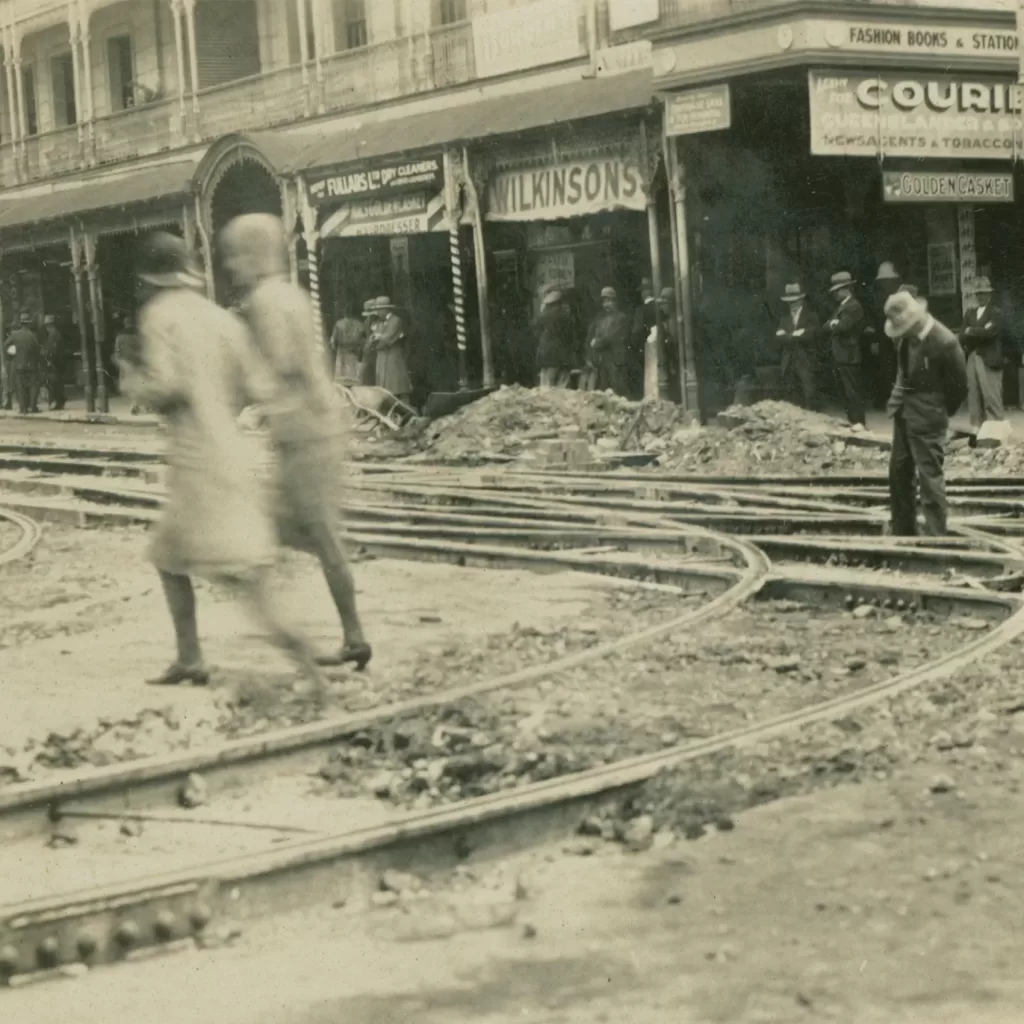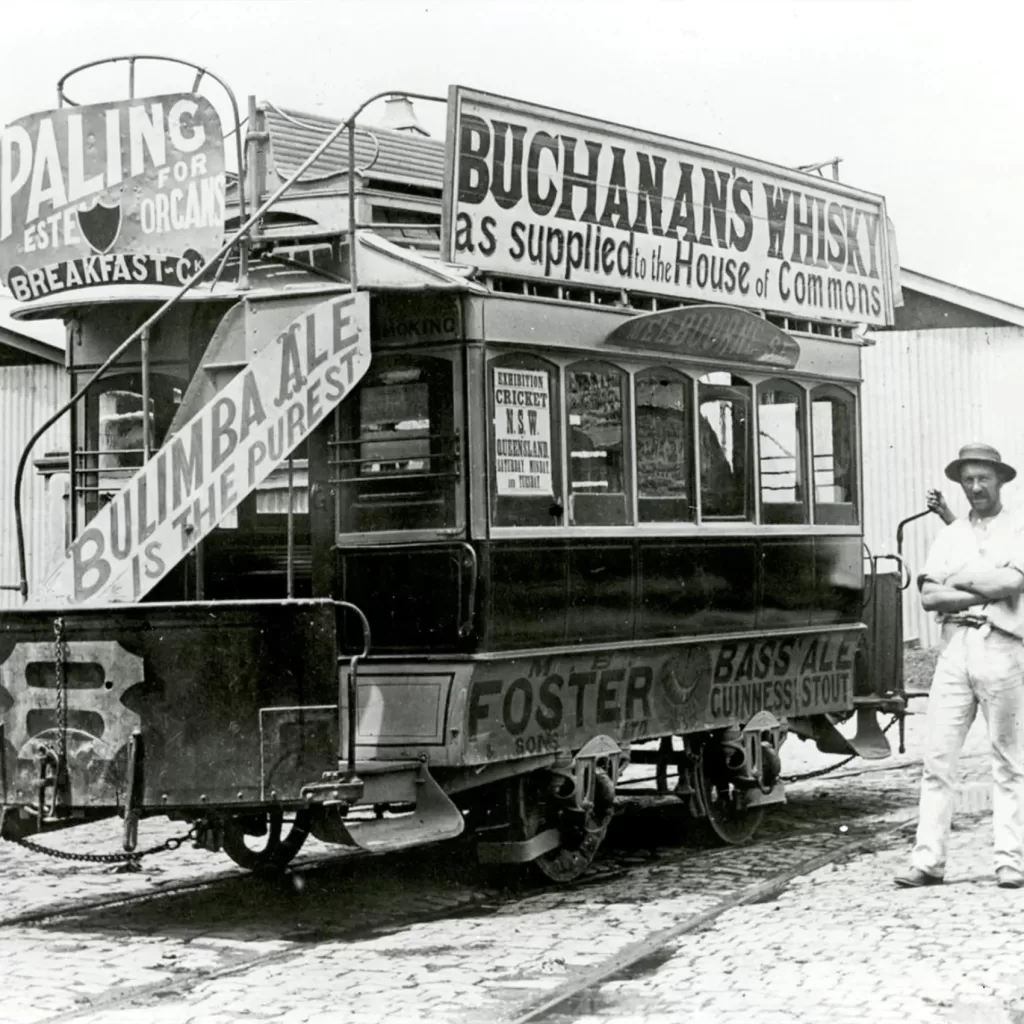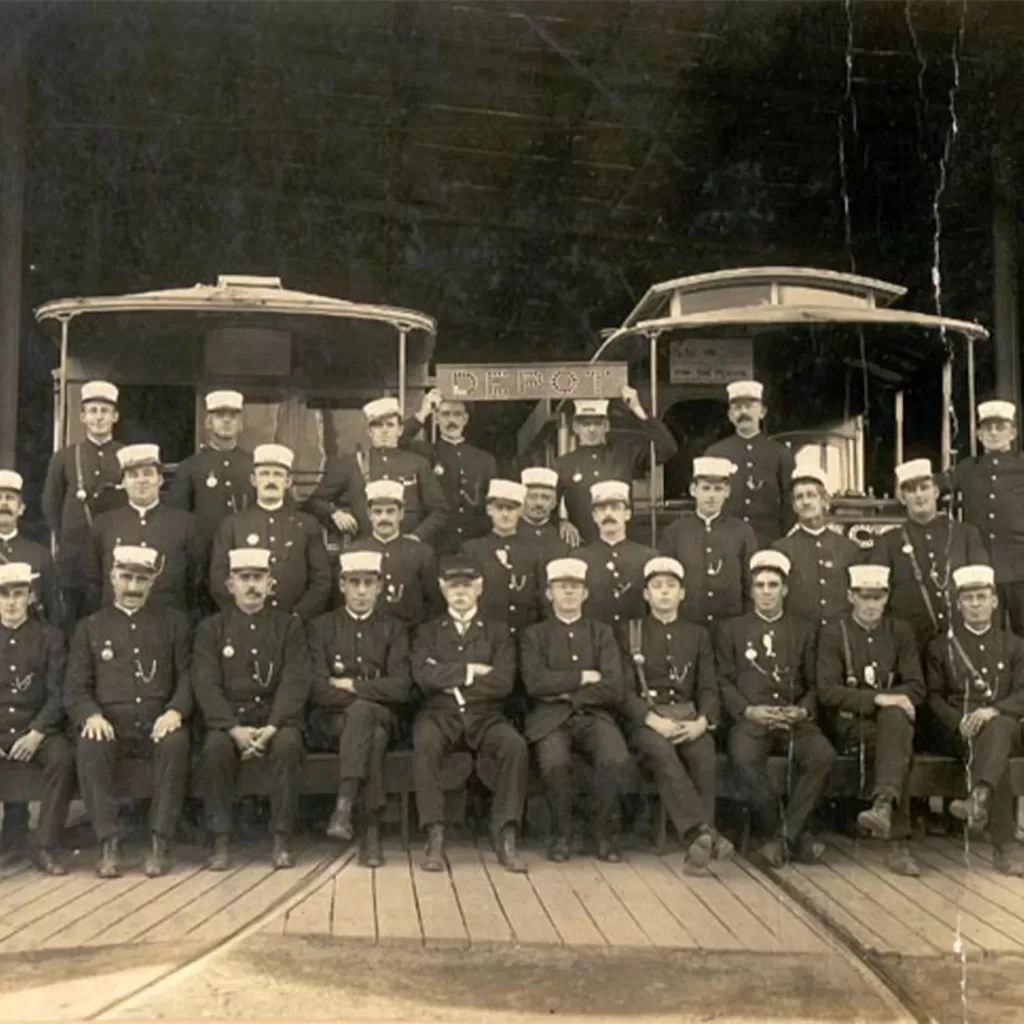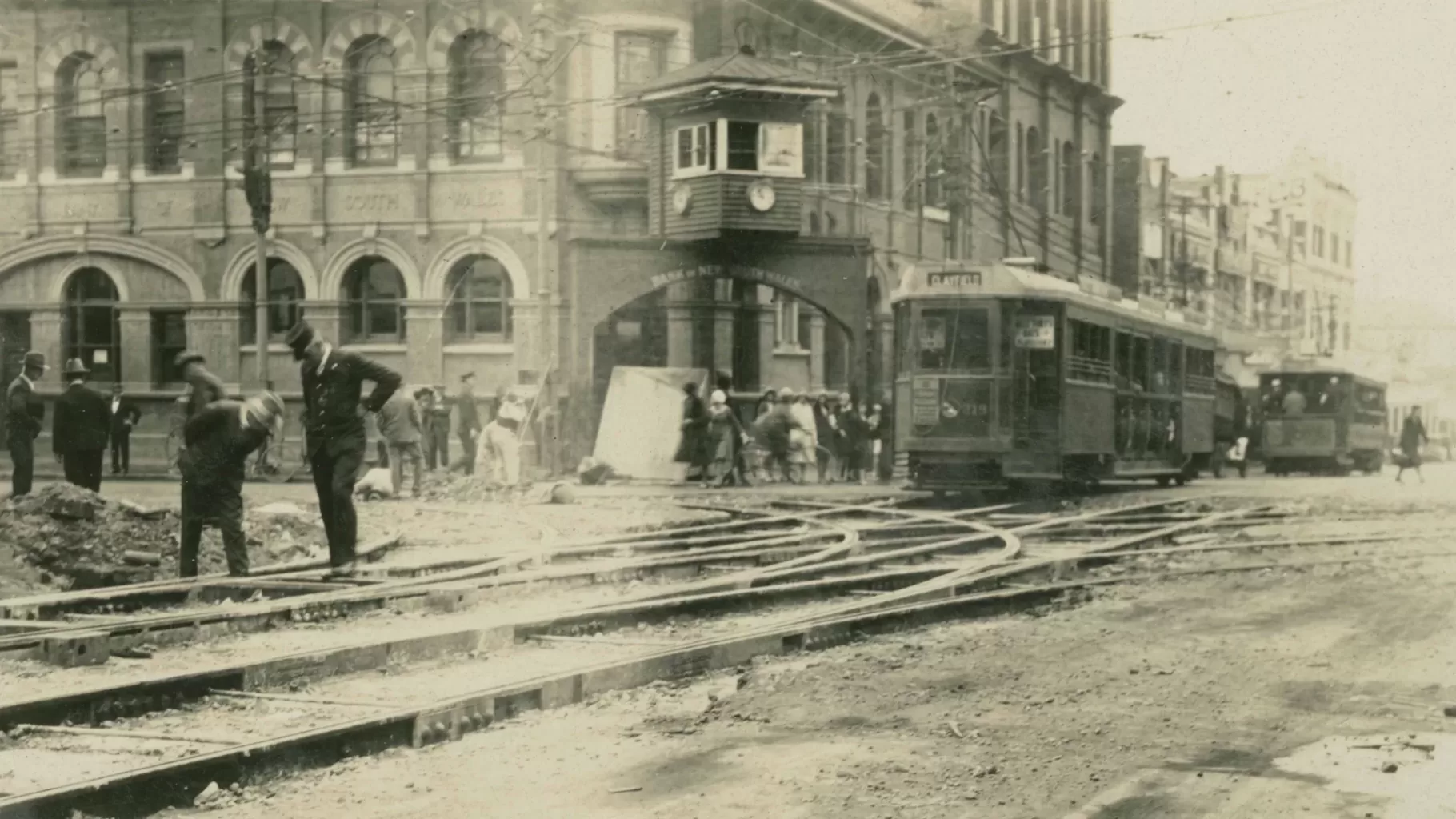‘Two to the Valley’ – Polite way of saying ‘Up Yours’. Comes from the signal of holding up two fingers to indicate to the tram conductor that you want ‘Two tickets to Fortitude Valley’. – Macquarie Online Dictionary

Hotels and transport links have always gone hand in hand. A hotel’s viability is hugely dependent on where it is situated and how easily it can be accessed.
Fortitude Valley is no different, and it is no coincidence that its first hotels were built on prominent streets close to transport routes.
Providing accommodation for weary travellers – as well as clean stables and sufficient feed for their horses – were important conditions for hotel licensees during the nineteenth and early twentieth centuries.
As Brisbane grew, publicans promoted their proximity to transport hubs to lure more guests. In 1866 the ‘Meredith and Ford’ cab company even operated from the rear of the original Prince Consort hotel.
In 1889 the owner of the rebuilt Prince Consort, John Heal, marketed his hotel as offering close access to the railway station and wharves. Other ads from the same period informed would-be guests that “Trams and Buses pass the door every 3 minutes.”
The Valley’s first trams were drawn by horses. One tram service began at Woolloongabba and passed through the Valley to Breakfast Creek. Another service linked up with the Bulimba Ferry in Newstead while another travelled down Brunswick Street to service New Farm.
The opening of Brisbane’s electric tramway from 1897 brought even more shoppers and workers to the Valley and more drinkers to the Prince Consort’s front door.
The tram routes through the Valley were part of a city-wide network which eventually stretched along 199 km of track. Almost all of the city’s tram services began, passed through or terminated in the Valley.

The Valley Junction at the intersection of Wickham and Brunswick streets became one of Brisbane’s busiest corners and an elevated Signal Cabin was built in 1927 so signalmen could switch the points for approaching trams. The signalman was not allowed to leave his post while on duty so a toilet was installed at the back of the cabin!
A tram workshop operated at nearby Light Street (now home to Emporium) and the New Farm Powerhouse converted coal into electricity to power the trams from 1928.
Extra trams were scheduled during the Brisbane Exhibition and on big race days. “Two to the Valley” became a common expression and newsboys sold the Sun and the Telegraph at tram stops.
There were even designated advertising trams during the 1930s which urged shoppers to spend their money in the Valley.
Brisbane’s silver and light grey trams became a much-loved institution. As tram historian Garry Ford has noted:
The fixed tramways that everyone knew carried the cars everyone knew to the termini everyone knew. There was no guesswork. You could sit back and relax, interact with your fellow passengers, and know, if a regular, that the pleasant conductor would always remind you to get off if you forgot, or the motorman would often wait for you if you were running late.
Brisbane’s love affair with trams reached its height during the 1930s and ‘40s, a period when men wore suits and hats, women wore gloves when they went shopping and policemen directed traffic at intersections.
At its peak in 1945, the tram network carried 160 million passengers each year, a number boosted by the introduction of petrol rationing and the influx of thousands of Allied troops during the War.

Patronage began to fall following the War, however, reaching a low of 60 million passenger trips in 1968. A disastrous fire at the Paddington Tram Depot in 1962 destroyed 65 trams and hastened moves already under way to replace trams with buses on a number of routes.
In 1965 Lord Mayor Clem Jones commissioned a study by American transport consultants Wilbur Smith and Associates which recommended replacing Brisbane’s trams with diesel buses and building a system of freeways.
In December 1968 Fortitude Valley traders responded to the closure of several Adelaide Street tram routes by paying Council to run a free tram loop between the Valley, the city and South Brisbane during the lead up to Christmas.
It was a last gasp measure, however, and the Valley’s long association with trams ended on 13 April 1969 with the closure of the city’s network.
Some argue that the end of the trams heralded the demise of Fortitude Valley as a retailing Mecca. In reality, its drawcard as a shopping destination had been slipping for some time, hastened by the population shift away from the inner suburbs, the increase in private car ownership and the advent of large suburban shopping centres.
In 1997, the State Government floated a proposal to build a light rail network through the CBD, New Farm, Fortitude Valley and Teneriffe. The project, estimated to cost $235 million, reached tender stage but the logistics proved too difficult and the plan was shelved in favour of extending the existing bus network.
Today, you can still see some of the city’s old trams at the Brisbane Tramway Museum at Ferny Grove. Several trams which used to travel through the Valley are on display, as is the restored Signal Cabin which used to perch above the traffic at the Valley Junction.
As for ‘Two to the Valley’, the expression lives on in the form of an IPA-style beer brewed by the Newstead Brewing Co.
[By Valley-based historian Robert Allen]
References
1866 Pugh’s Almanac
Howard Clark and David Keenan, Brisbane Tramways: The Last Decade, 1985 (reprint)
Rod Fisher, Bygone Brisbane: Its history, your heritage, 2016
Garry Ford, ‘Trams, Tramways and Termini’, in Brisbane: Water, Power and Industry, Brisbane History Group Papers no 20, 2008
Lost Brisbane and Lost Brisbane 2, Royal Historical Society of Queensland, 2014 and 2016
Newstead Brewing Co
Paul Granville blog, ‘Life with Brisbane’s trams’, July 31 2022
‘Remembering the Brisbane Tramways’ Facebook page
The Australian, 25 November 1997
With thanks to the volunteers of the Brisbane Tramway Museum

